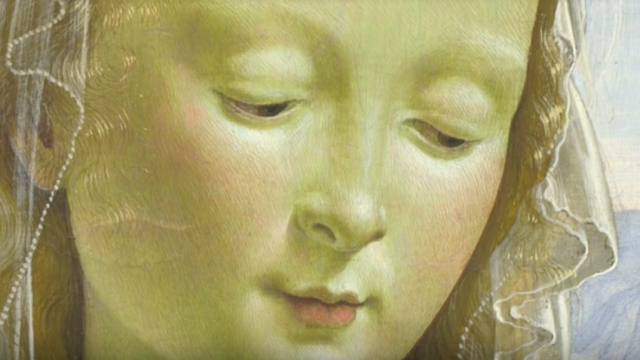Yea, the sparrow hath found an house, and the swallow a nest for herself, where she may lay her young, even thine altars, O Lord of hosts, my King, and my God.
Tuesday, January 22, 2019
Medieval painting; how it's done
Conservators and other art-expert people know now that certain pigments are more chemically stable than others. The green, apparently, lasts more or less forever, but the pink and white dabbed over top to make skin tone doesn't. This means that when the painting gets to five or seven or eight hundred years old, you can really see how it was constructed.
Someone asked me what I'm looking for when I go up to the National Gallery with my magnifying lens to look at the medieval and early Renaissance altarpieces, expecting me to start waxing poetically about the spirituality of sacred art. I said, "Brushstrokes." She seemed a bit disappointed.
But the trouble with art books is that the resolution is un-alterable. You can't zoom in close enough with a picture in a book. This is the one advantage we have with the internet. A lot of museums now are producing super-hi-res photos of the paintings so art students and historians can zoom in to micro-close views to see how the paintings are constructed. But of course, if you live in Italy you can just take the bus up to Perugia and pay the super-low 8 bucks to go look at the real thing. Once you get over the shock and awe of actually being in the same room with these things, you can sort out quite a lot just from looking.
One of the things I like about all this is learning these ancient and somewhat arcane ways of combining natural materials to produce your own art supplies. The long process he's doing here in the first half is to make 'bole" the red clay gesso that goes under gilding.
~
Subscribe to:
Post Comments (Atom)

No comments:
Post a Comment